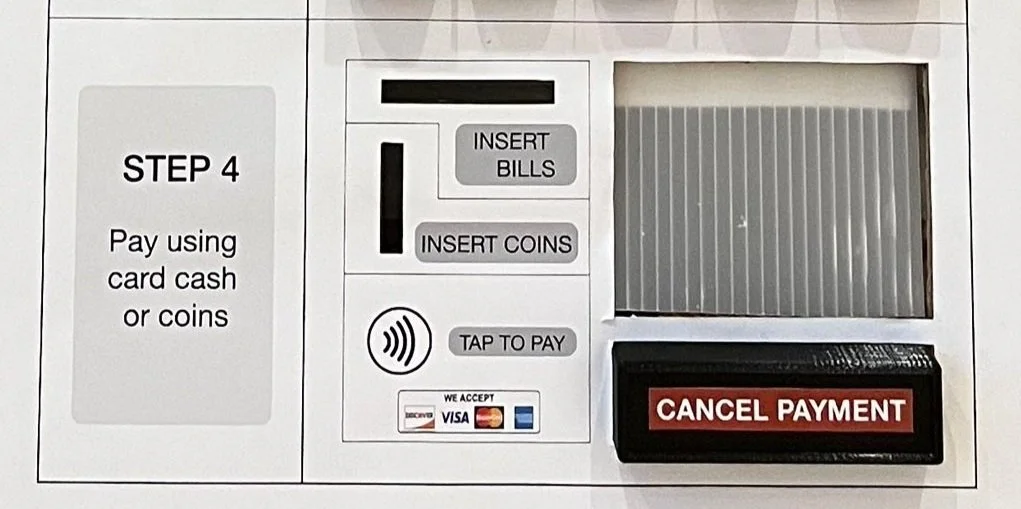Voice Interaction Parking Station
Pay Easily, Pay Happily – Make Parking Effortless For Senior Drivers
According to the 2016 Census, 50% of citizens living in Northwest Ithaca were aged 50 years and older, with 28% being over 70 years old, much higher than the national average of 9.5%.
Contrast to common stereotypes about elderly people, those living in downtown Ithaca still drive themselves around – to develop a hassle-free solution for this growing group to park and pay, we designed a parking pay station based on voice interaction.
In this demo video, we used the Cambridge Simulation Gloves to empathize with the struggles which senior drivers often encounter.
“I’m a luddite.”
In our user research,senior drivers sometimes jokingly describe themselves as “luddites” - they are unfamiliar with technology, they prefer cash to credit card payments, and they also report difficulties seeing or remembering information when using the parking meters.
“I'm old and I'm adverse to technology. I don't like using them.”
“I like the old machines where I put my quarters, since I prefer going to bank to draw cash.”
“I don't bring glasses all the time. I can't see.”
“It’s just complicating things.”
We tested the existing parking stations with senior drivers. The payment process usually takes around 2 to 3 minutes for them, and they feel the key information is not presented clearly enough. Location-wise, sometimes the machine is even located across the street, reducing the seniors’ willingness to use it.
“If it's freezing out there and you're standing, it takes a while to finish the payment.”
“I got a ticket once at that spot because… turns out that it's specified for trucks-only.”
“If it wasn't on the other side, I might walk up to use it.”
To encourage seniors to interact with the parking machine, the payment interaction needs to be as smooth as possible - it should be simple, and show only the necessary information. Furthermore, to adapt to seniors’ functional decline, the paying machine should not rely on digital display as the only communication channel.
We interviewed 6 people (aged 67 on average) and reviewed related literature to gain insight into this project.
Pay Easily, Pay Happily
We put forward this simple parking payment station. It comes with sensors, thus it automatically starts the timer when it senses a car parked on its spot, and communicates with voice and LED display. The only thing drivers need to do is to PAY — with cards or cash!
Hi-Fi Prototype
User Interface
Storyboard with our Persona, Julia
As Simple As Possible
The only necessary action when using a parking payment station is to PAY, so we removed all the other redundant steps by automating them – the machine will detect when your car is parked in it and start the timer automatically – you only need to pay when you want to leave.
Height Fit For Everyone
(including wheelchair users!)
The height of our parking payment stations are adjustable with a single press on the designated button. From the 95th percentile tall males to the 5th percentile short wheelchair users, this machine is available to everyone.
Telephone Receiver
For voice interaction, you could also pick up the telephone apart from the speaker for voice prompts– a clear and familiar perceptible affordance for elders.
Feature: No Digital Display
LED Display For The Total Payment
After pressing the button for the spot you parked in, the machine would automatically add up the total payment and light it up via LED – no need to do any math by yourself.
Feature: No Digital Display / Easy Payment
Cash Payment Option
We accept credit cards, bills, and coins – pay however you like!
Feature: Easy Payment
Wayfinding Identifier
With a clear graphic in bright color as the sign, you could easily recognize the parking payment station and find your car even from far away.
Feature: Easy to Locate
6 Key Concepts for 4 Design Features
Simple But Unexpected
In our prototype test, we applied the Wizard of Odds method on two seniors. We assigned them two tasks, to park and to pay. Although both of them found the whole process simple and easy, they got a bit confused when they found nothing needed to be done when they parked. They are used to the concept of paying and/or getting a ticket to pull in the car, and thus asked for clearer instructions on the machine.
1st Test Participant: Ms. L
2nd Test Participant: Ms. C
Duration
2022/11 - 2022/12
Instructor
Dr. Jay Yoon
Team Members
Hsin-Ming Chao, Kiranmayi Yenduri, Nadine El Nesr,
Jai Khanna, Jhovanna Perez, Lauren Cheetham
My team created this parking payment station in the course Human Factors and Inclusive Design, taught by Cornell University Human Centered Design, with support from Digital Design and Fabrication Studio (D2FS). The voice interaction is powered by Voiceflow.
# Personal contribution: team lead, user research, parking meter testing, solution brainstorming, voice interaction content, storyboard story, prototype assembly, prototype testing, video making






























